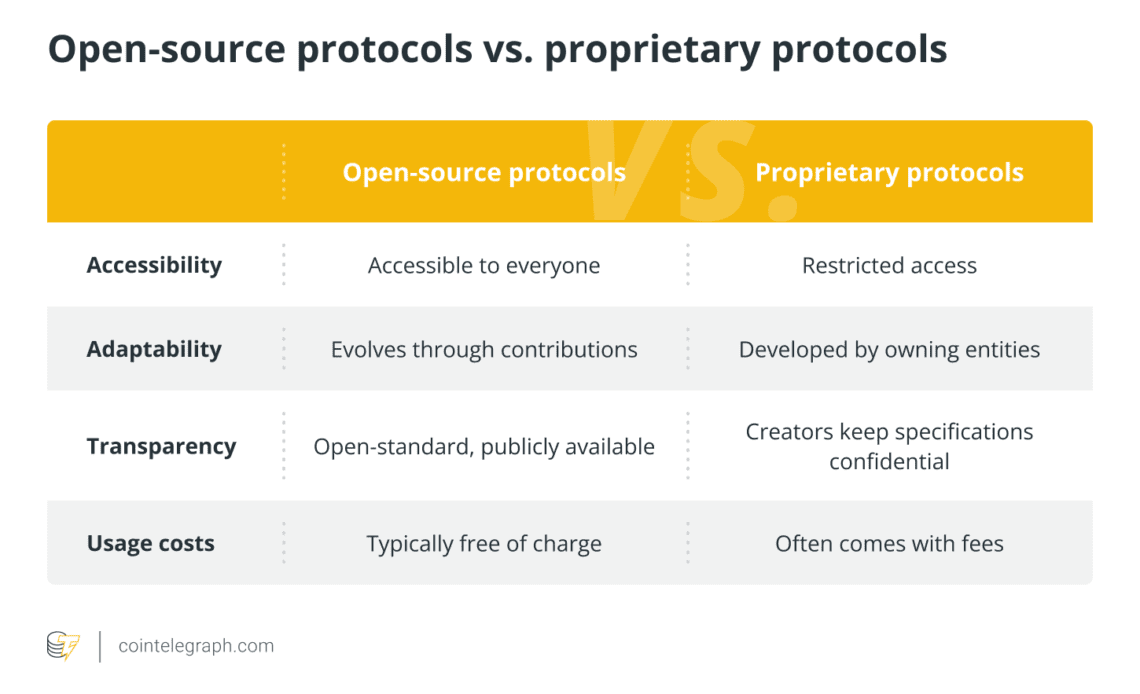Understanding open-source protocols
Open-source protocols have become a mainstay in the tech world and are gaining traction due to the myriad benefits that they offer over their proprietary counterparts.
The protocols are typically created with the intention of being used by the public, enabling anyone to examine, alter and share their code. The benefits of open-source protocols are multifaceted, ranging from their inherent transparency to their wider accessibility.
Additionally, they rely on peer evaluations, a cost-effective and inclusive model that distinguishes them from their proprietary counterparts. Prominent examples of open-source software include widely used operating systems such as Linux and Android and the popular Firefox web browser.
When it comes to open-source cryptographic protocols, the Bitcoin, Ethereum, Cardano and Polkadot networks stand out as noteworthy blockchain protocol exemplars, among others.
Open-source vs. proprietary protocols
Open-source and proprietary protocols represent two distinct approaches to protocol development, each with its own set of principles when it comes to protocol implementation.
The following is a dissection of their key disparities:
What’s the development process for open-source protocols?
The development of open-source protocols involves several distinct phases, each integral to a protocol’s evolution. It all starts with the conceptualization phase, where developers lay the foundation that defines the protocol’s standards and purpose.
Usually, the basic concept is based on an existing protocol with some enhancements. The conceptualization stage acts as the bedrock, upon which developers meticulously outline the architecture and features, forming a robust theoretical foundation. In this phase, developers chart out a well-defined roadmap, akin to a strategic plan, guiding the project’s trajectory.
The subsequent step in the development process is usually the prototyping stage. In this stage, developers create a functional model of the protocol that includes the key proposed features. The prototype is usually made accessible to the public as the beta version.
Releasing the beta version subjects the software to real-world scenarios and user interactions, allowing developers to discern its strengths and weaknesses. The stage also allows developers to get…
Click Here to Read the Full Original Article at Cointelegraph.com News…
